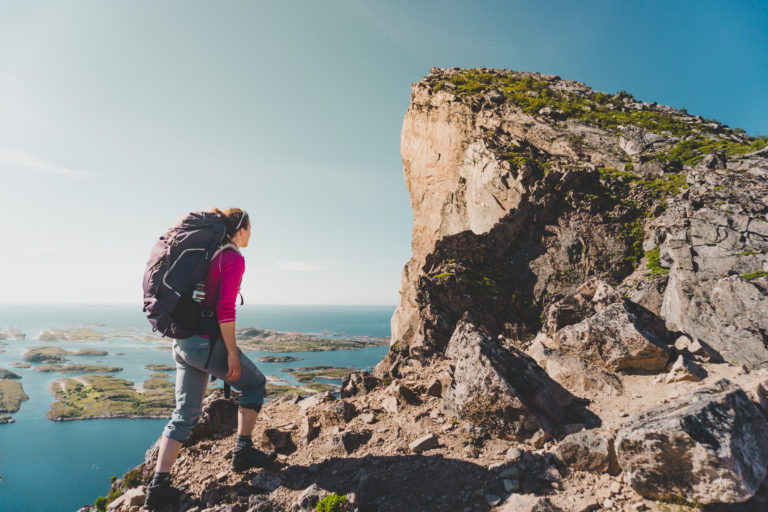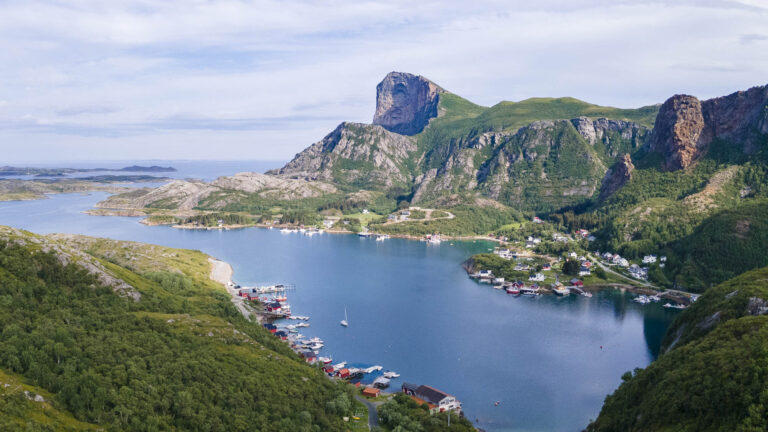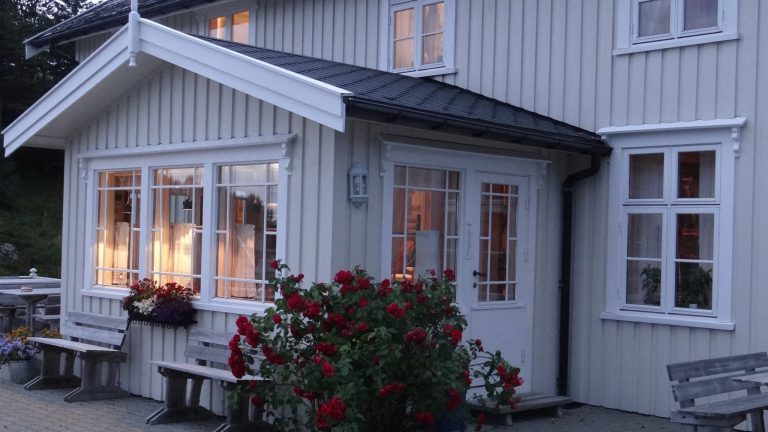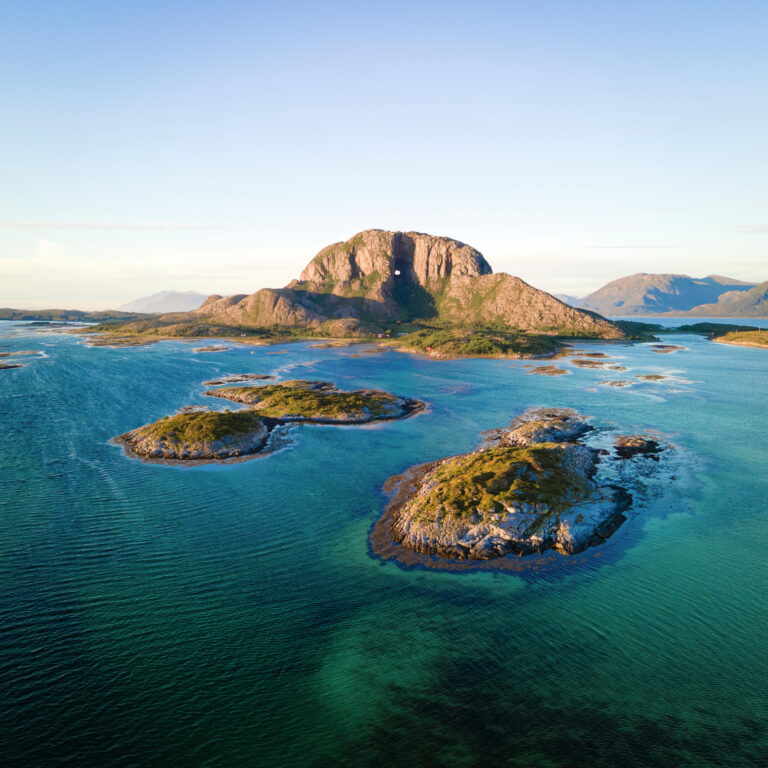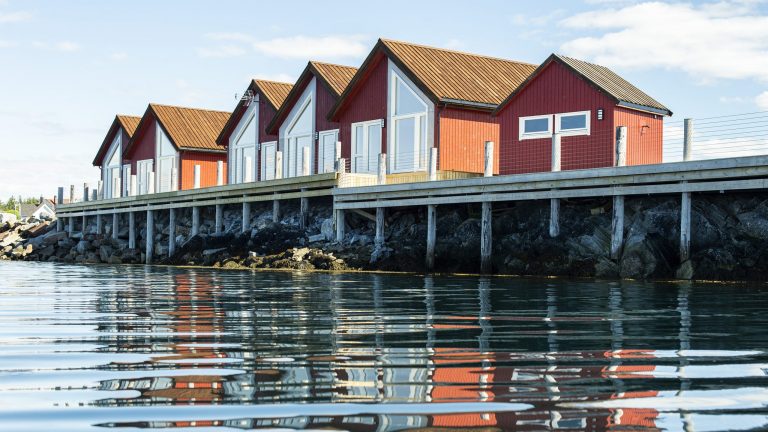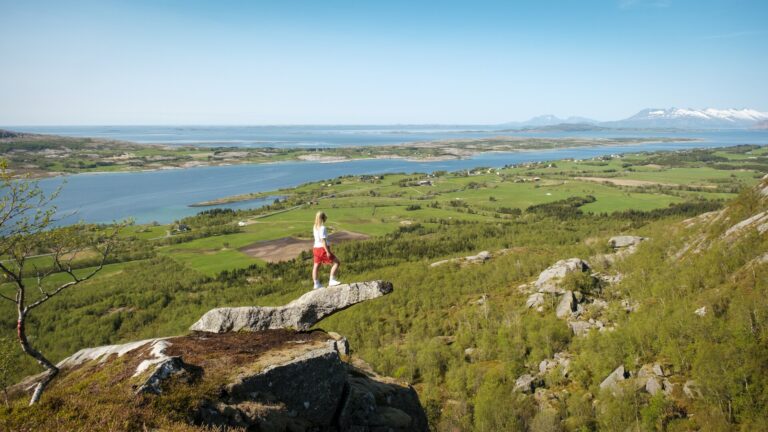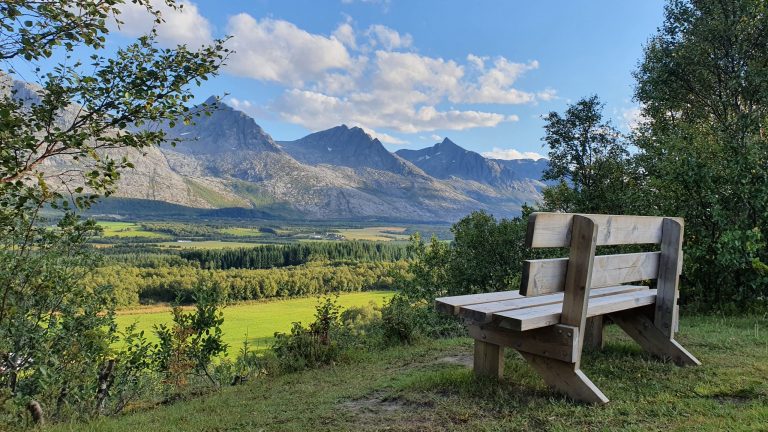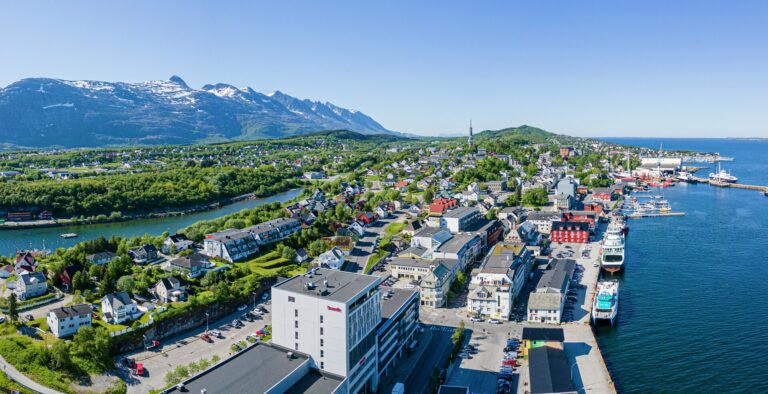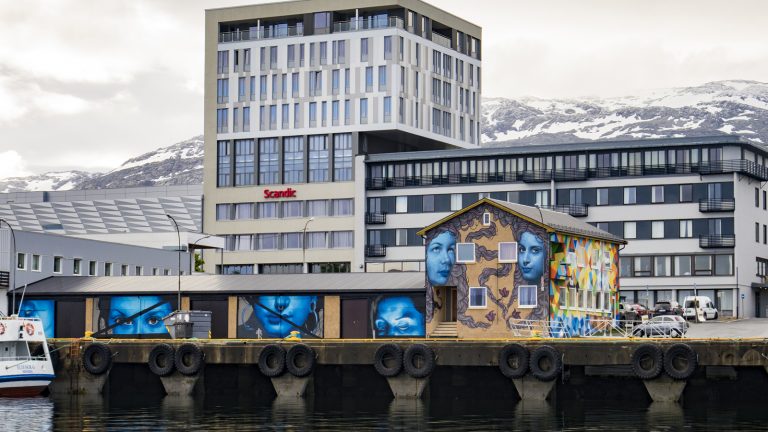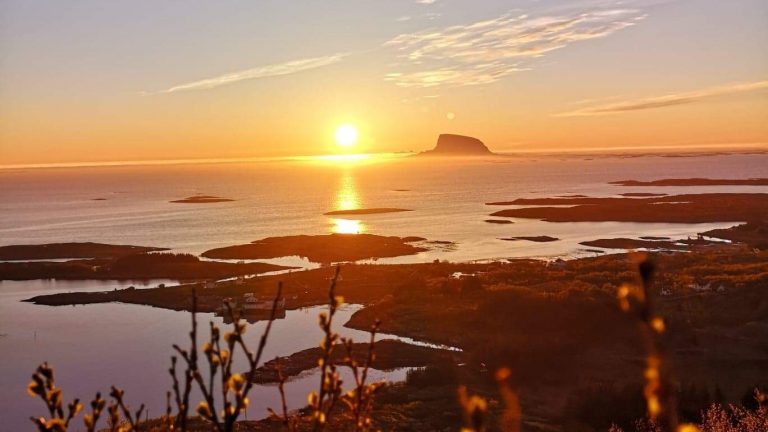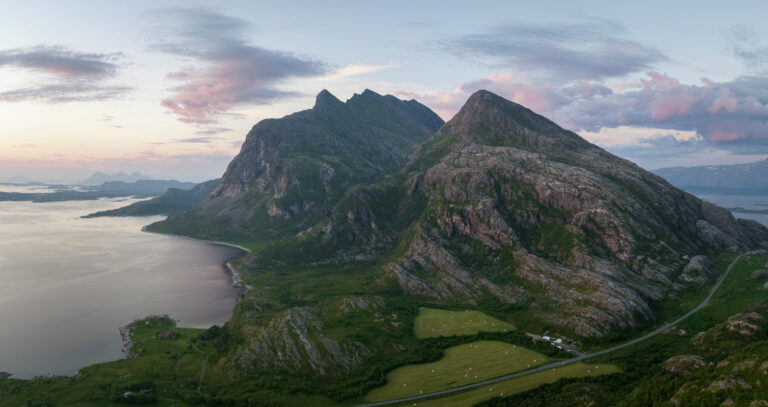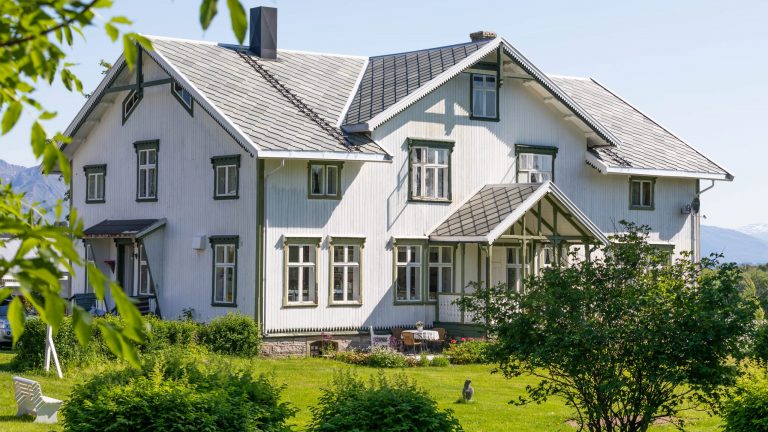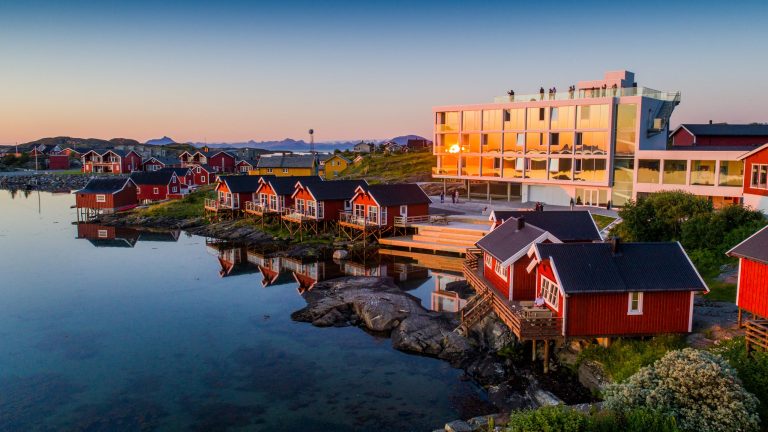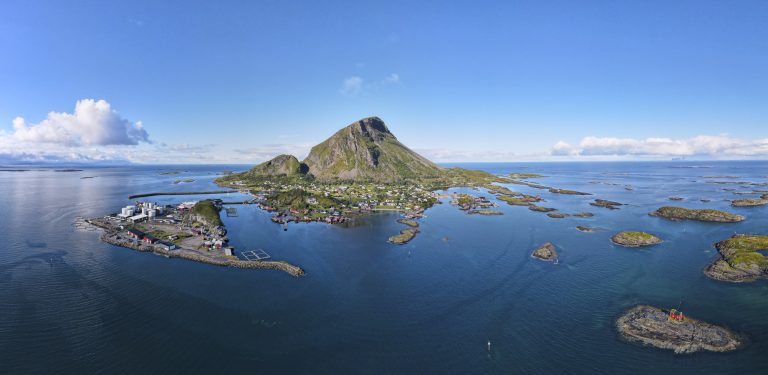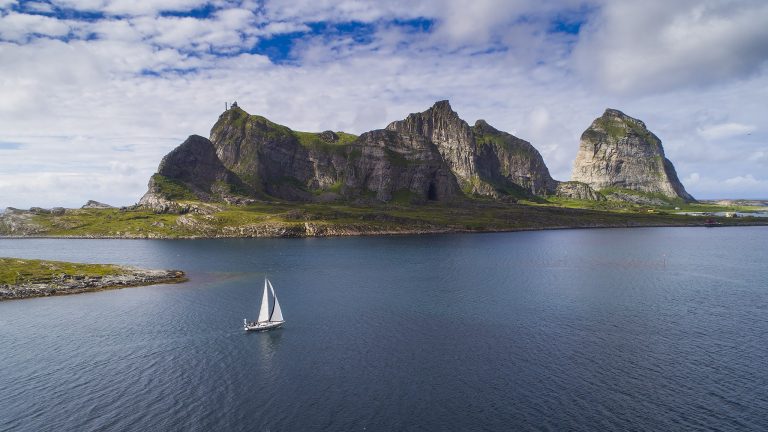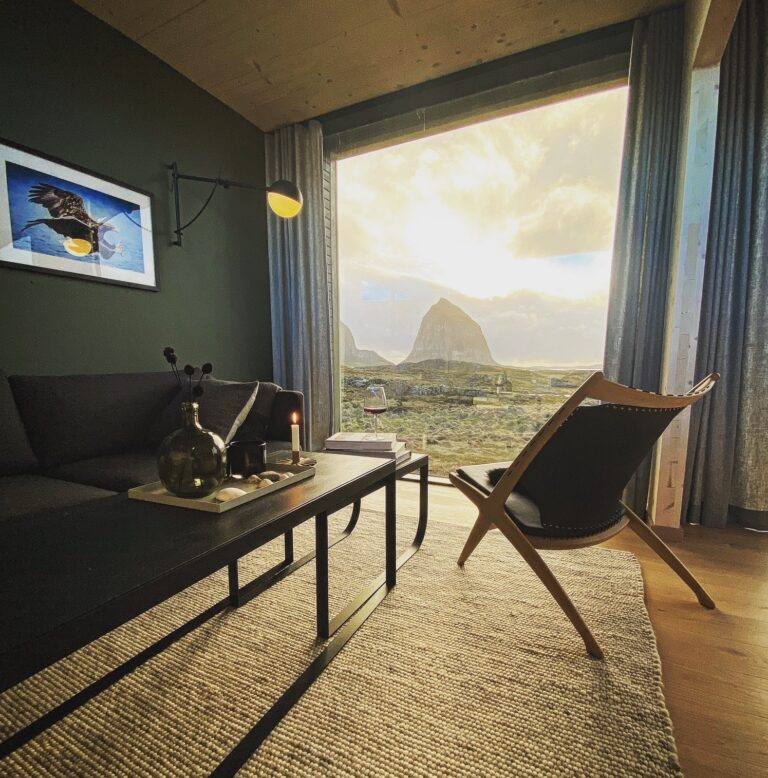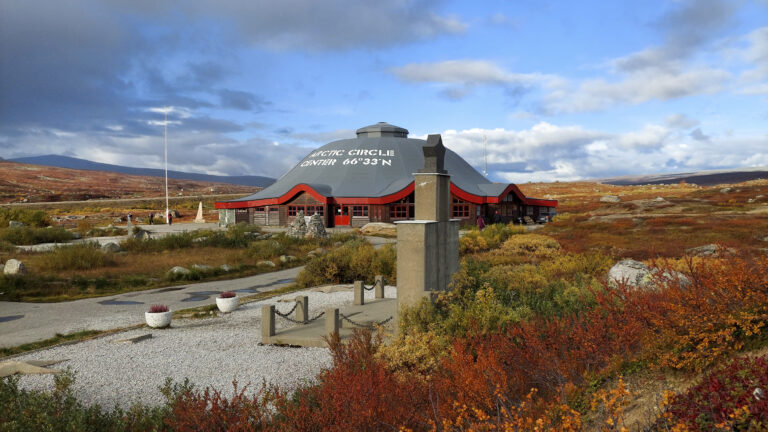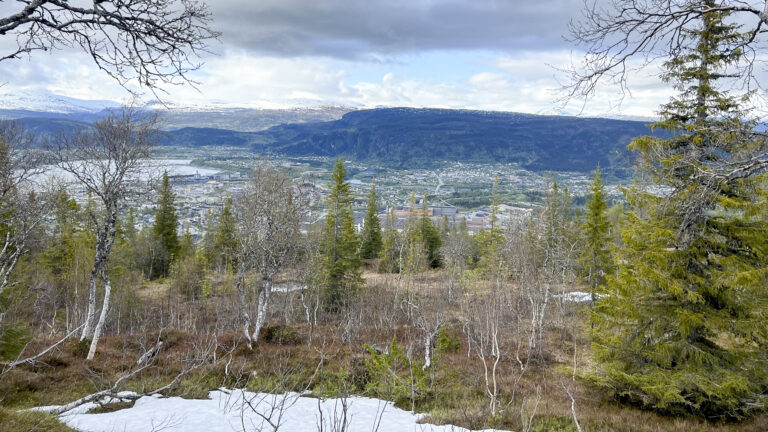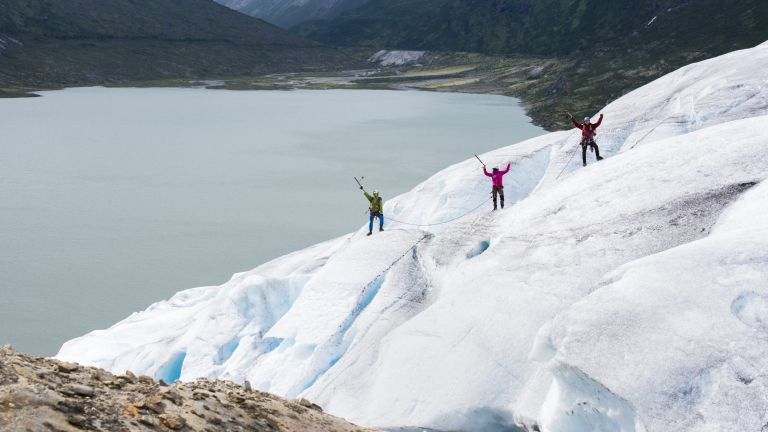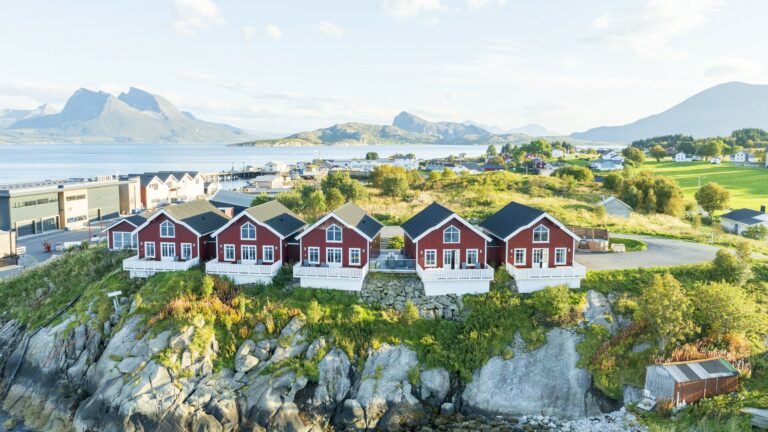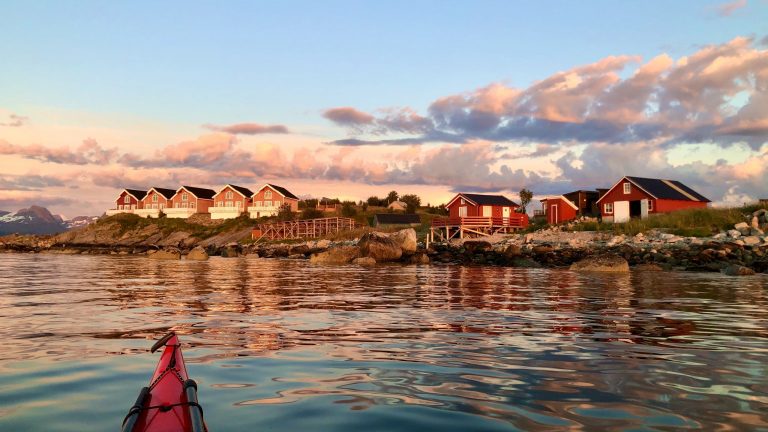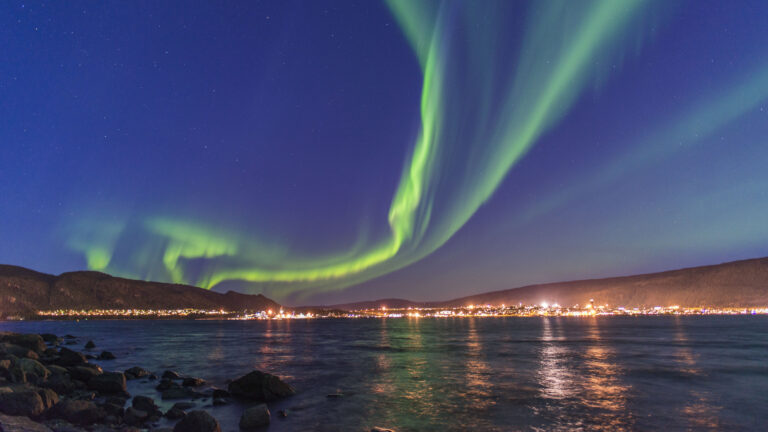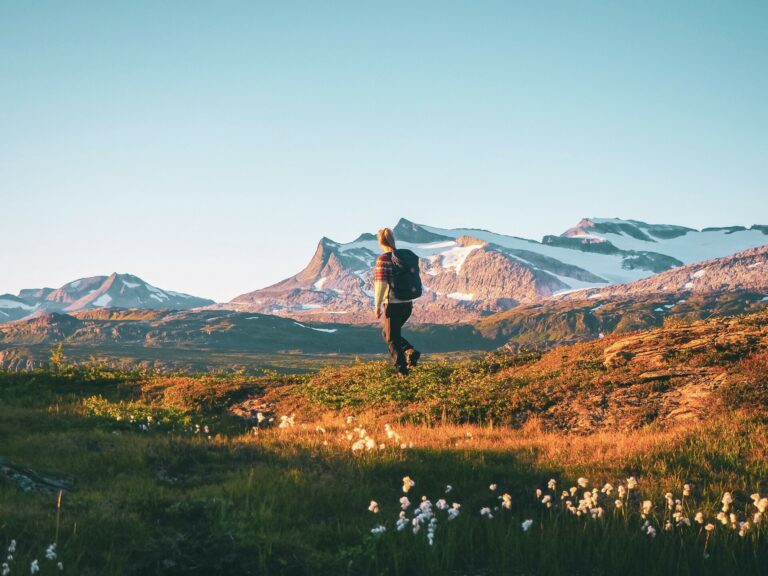Top spots to see the Northern Lights in Helgeland
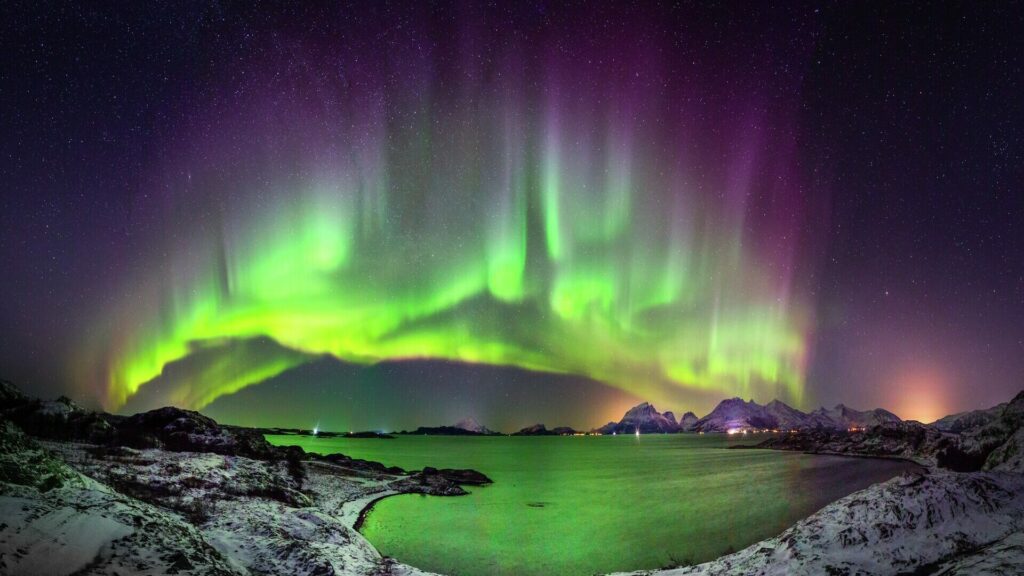 Hans Petter Sørensen / Faroutfocus.no
Hans Petter Sørensen / Faroutfocus.no
Wondering where to see the Northern Lights? Here are 13 stunning spots the aurora seasons of 2025 and 2026 are predicted to be especially strong—and Helgeland is truly one of the world’s best places to experience the northern lights. Wide open spaces with little light pollution offer ideal conditions, while the dramatic mountains and thousands of islands along the coast set the stage for unforgettable displays in the sky. Here are 13 exceptional places to catch the aurora in Helgeland.
Tip: In late autumn and winter, many trails can be icy. Bring traction cleats if you’re heading uphill.
Torghatten, Brønnøysund
 Kristoffer Møllevik / Visit Helgeland
Kristoffer Møllevik / Visit Helgeland
Just south of Brønnøysund, Torghatten is a well‑known mountain and a great spot for aurora viewing. You can kayak out to one of the islets south of the mountain, climb to the famous hole and look through it from the south side, hike to the summit for views north over Brønnøysund toward the Seven Sisters, or enjoy a relaxed walk along the trail around the mountain. Brønnøysund enjoys a mild coastal climate so snow is rare—but late in the season, bring traction cleats if you plan to reach the top.
Simpler option
From the cosy cabins at Norsk Havbrukssenter on Toft, you can watch the sky straight from your cabin or sauna—perhaps after a bracing evening dip.
Vegatrappa, Vega
 Kristoffer Møllevik / Visit Helgeland
Kristoffer Møllevik / Visit Helgeland
On Vega’s north side, the Ravnfloget viewpoint near the top of Vegatrappa offers a stunning view. The hike takes about an hour, and once you’re up, you’ll see the northern archipelago and the island Søla to the west, with Basecamp Vega nearby for a warm return.
Vegatrappa has been named Nordland’s most stunning mountain hike. With around 2,000 steps and well‑placed rest areas, it’s steep and can be slippery with frost or snow, so it’s best earlier in aurora season.
Simpler option
In Vega’s low‑lying coastal landscape, you don’t need to hike high for a clear aurora display. Sit just outside your door at Basecamp Vega or stroll down to Sundsvollfjæra beach for a lovely view. Or drive to Vega World Heritage Centre at Nes and watch the lights from the walking trail on the north side of the centre.
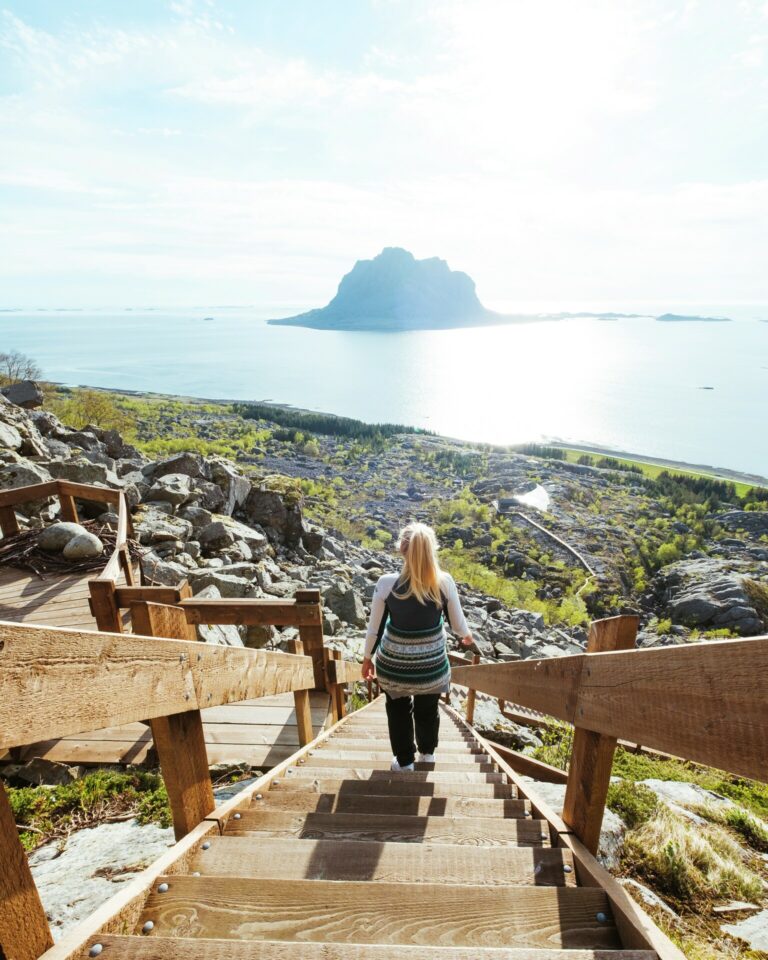
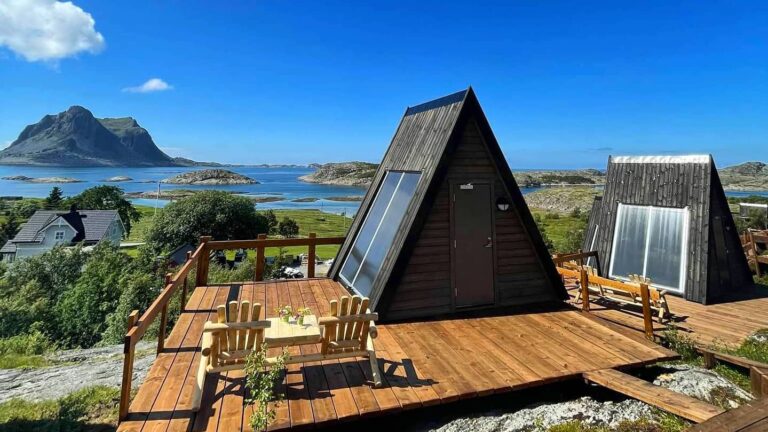
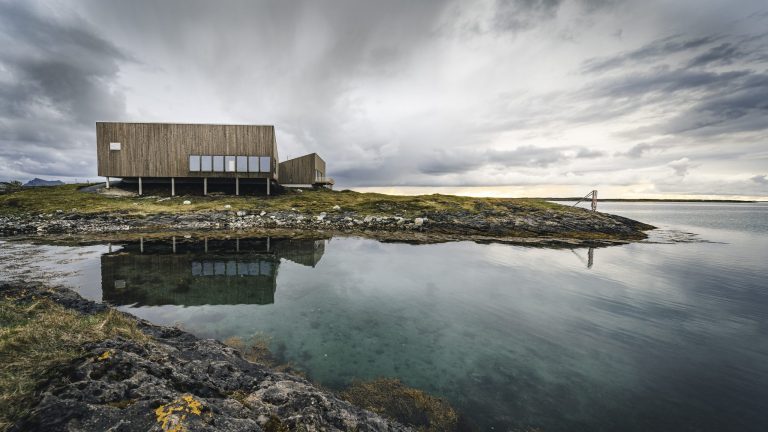
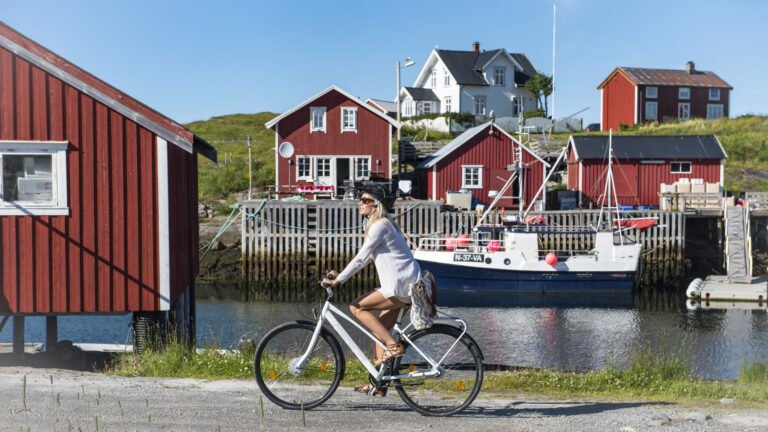
Trollpikken, Vevelstad
 Kristoffer Møllevik / Visit Helgeland
Kristoffer Møllevik / Visit Helgeland
Trollpikken is a quirky rock formation you can walk to on your way toward Høyholmstindan’s peaks. It juts out toward the northern coastal landscape—and when conditions are right, you’ll see auroras dancing above the Seven Sisters near Sandnessjøen and Dønnamannen over Dønna. The trail is well‑developed with stone steps, viewpoints, and benches; snow is rare in Vevelstad’s mild coastal climate, but cleats are useful in late autumn and winter.
Simpler option
Walk out to the pier at Nordvika Small Boat Harbour near Handelsstedet Forvik. It’s an easy stroll with beautiful northern light views as well as of the Seven Sisters, Dønnamannen, and Herøy islands to the north.
Hatten, Hattfjelldal
 Kristoffer Møllevik / Visit Helgeland
Kristoffer Møllevik / Visit Helgeland
Hatten is a well‑known hiking mountain offering striking views over the wild landscape toward Røssvatnet and Okstindan in the north. The hike isn’t long but includes some steep sections, so choose mild weather and bring grip cleats in late autumn.
Simpler option
Hattfjelldal has an extensive snowmobile trail network—later in winter you can rent a snowmobile or join a guided tour to chase the northern lights, stargaze, and enjoy a warm fire under the sky.
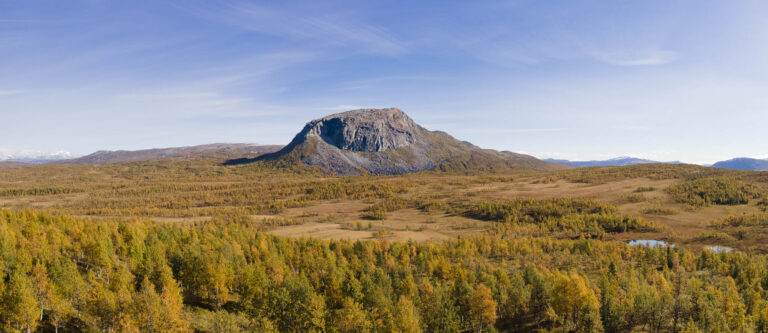
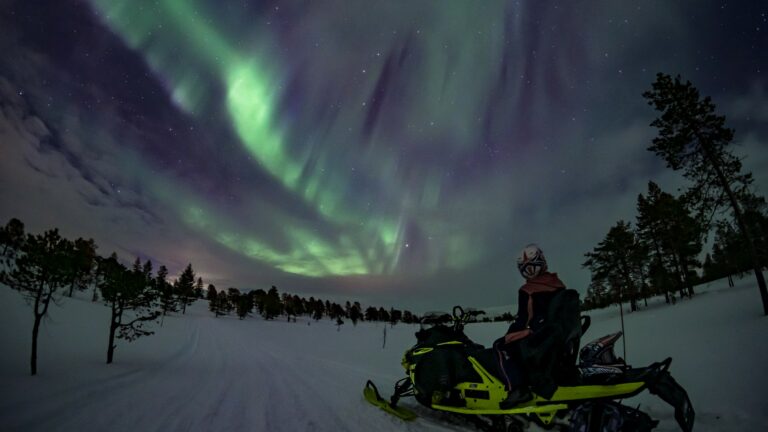

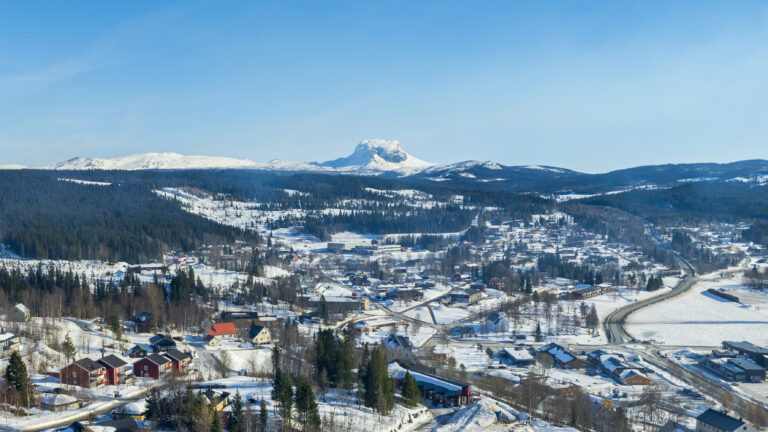
Helgelandstrappa, Mosjøen
 Broadstone / Visit Helgeland
Broadstone / Visit Helgeland
The world’s longest stone stairway—with over 4,000 steps—Helgelandstrappa climbs from the mouth of the Vefsna River to the summit of Øyfjellet (818 m). Best done in late summer or early autumn before snow and ice make the top difficult to access—but you’ll need to reach the summit to face north where the lights appear.
Simpler option
Try a northern‑lights snowmobile tour with Hi North. They take you into the vast trail network around Mosjøen, far from city lights, under a star‑filled sky.
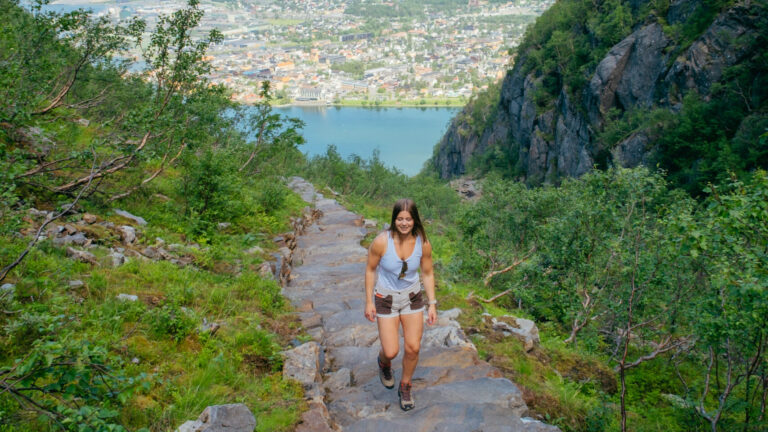

Rabothytta, Okstindan
 Emilie Solbakken / Visit Helgeland
Emilie Solbakken / Visit Helgeland
Set at about 1,200 meters among glaciers and high peaks in the Okstindan range, Rabothytta is an awe‑inspiring mountain hut. Before heavy snow falls, you can drive to a summer parking area at around 700 m, then hike about 5 km along a marked trail. Expect frost or snow from late September—bring suitable high‑altitude gear.
Simpler options
Korgfjellet Fjellstue sits on Korgfjellet with great light conditions and lovely terrain in summer, autumn, and winter.
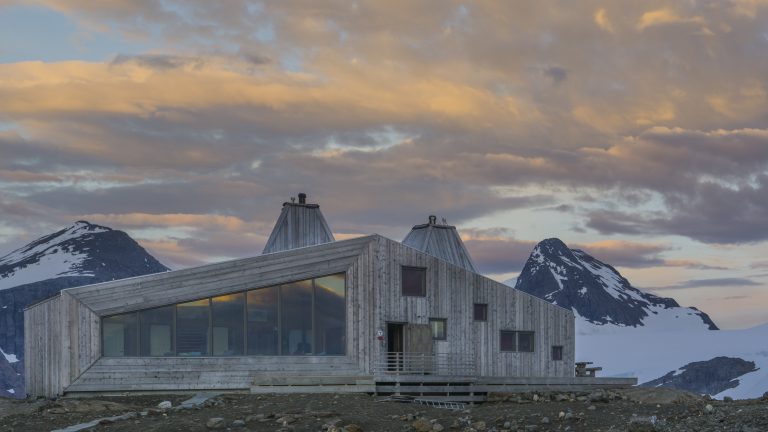
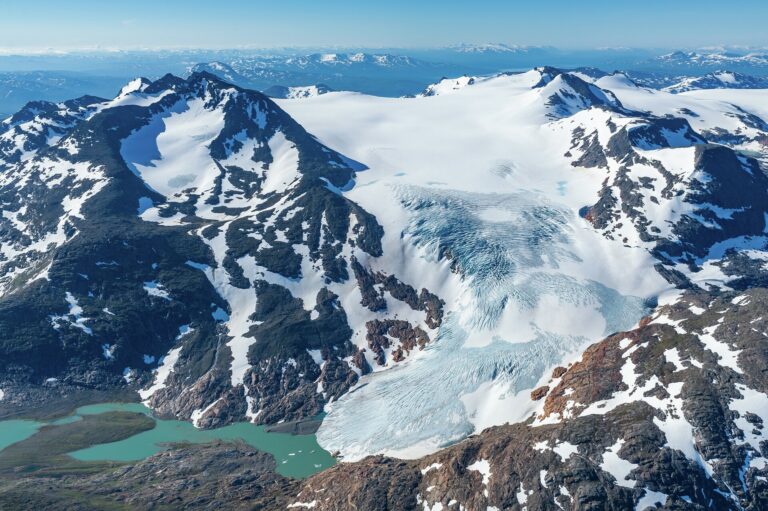
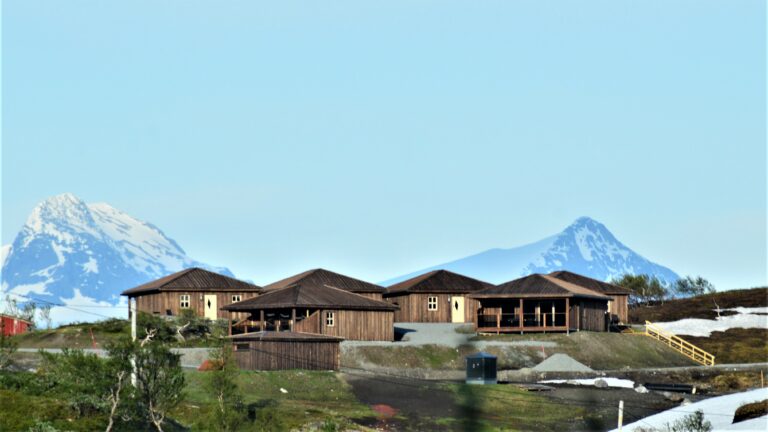
The Seven Sisters, Sandnessjøen
 Kristoffer Møllevik / Visit Helgeland
Kristoffer Møllevik / Visit Helgeland
The Seven Sisters ridge near Sandnessjøen offers popular summer hikes—and in late summer through autumn, you can trek between the peaks to see the aurora sweep across the Helgeland coast. Reaching the summits is challenging at night and requires experience and headlamps. You might find it just as rewarding to pause below the peaks to enjoy the starry sky and aurora over the sea.
Simpler option
Take a walk to the marina or visit the rest stop at the “House of Winds” sculpture for views over the Helgeland Bridge.
View the House of Winds on Google Maps
View the marina on Google Maps
Dønnesfjellet, Dønna
 Kristoffer Møllevik / Visit Helgeland
Kristoffer Møllevik / Visit Helgeland
With a road to the top and just under 100 m elevation, Dønnesfjellet is an easy outing. From the summit, enjoy a sweeping view over islands like Lovund, Træna, and Hestmannen. And if the northern lights show up, just sit back with a warm drink and take it all in.
Lovund Hotel, Lovund

For those who want a bit more comfort: Lovund Hotel offers beautiful rooms, excellent dinners, and evenings spent in a warm glass dome bar with panoramic views north. Whether you’re dining, sipping a drink, or just relaxing under the duvet, you don’t have to go outside to see the aurora—just glance up. And for those who wish to go out, there are trails on the island’s remote north side with excellent foregrounds of sea and sky.
Trænfjellene, Træna
 Arvids Baranovs
Arvids Baranovs
Træna’s islands lie on Helgeland’s outer edge, surrounded by a fjord and the open Atlantic. Here the sky is almost bigger than the sea. With the aurora behind the striking Træna peaks (especially Sanna), the sight can feel otherworldly. The best viewing spot is on the northwest side of the main island Husøy, near the cabins at House By The Sea. Mild coastal weather makes this a good spot for the entire aurora season, from September to March–April.
Simpler option
If you stay at House By The Sea, you don’t even need to step outside—the cabins face northwest, so you can simply turn off the lights and watch from your room.
The Arctic Circle, north of Mo i Rana
 Simon Fossheim / Visit Helgeland
Simon Fossheim / Visit Helgeland
How about crossing the Arctic Circle under the northern lights? Just north of Mo i Rana, at the Arctic Circle Centre on Saltfjellet, the high open plateau offers dark, vast skies—ideal for a green aurora display. You can pull over near the centre or one of the roadside rest areas to enjoy the show from your warm car—or follow the trail along Namnlauselva at Semska as far as you like.
Simpler option
If you’d rather stay closer to town, head to the ski jump hills at Fageråsen or continue up to Appelsinhaugen and Grotneshytta on Mofjellet. From there, you can watch the aurora playing over the city lights and the mountains beyond.
Indre Kvarøy, Lurøy
 Kristoffer Møllevik / Visit Helgeland
Kristoffer Møllevik / Visit Helgeland
Just below the Arctic Circle on Helgeland’s coast, the little island Indre Kvarøy can feel like a personal aurora paradise all winter. You can watch the lights from a heated hot tub or the windows of a seaside cabin, or walk to the north side of the island to escape residual village lights. From there, you’ll see Hestmannen and Rødøyløva in the north—a beautiful setting for an aurora show.
Rødøyløva, Rødøy
 Simon Fossheim / Visit Helgeland
Simon Fossheim / Visit Helgeland
Standing at 440 m, Rødøyløva offers sweeping views over the coastal landscape and peaks like Bolga, Kunna, Fugløya, and—on clear days—even Landegode near Bodø, or Lofoten in the distance. The hike is well‑prepared with sherpa steps and trails. Though not tall, the summit towers over the coast. Since it ends at a steep drop, it’s vital to have a good headlamp for night hikes in winter.
Simpler option
Breisanden beach, just under Rødøyløva’s southern side, is a short, pleasant walk from Klokkergården. From there you can see the mountain and a retreating aurora above it.
